return to Industry Forum home page
INDUSTRY FORUM PROGRAM
Tuesday, 4 December 2012 – VINTage Internet
Tuesday, 4 December 2012
10:00 - 12:00
IF7: Executive Forum: New Technologies to Watch >>
Tuesday, 4 December 2012
10:00 – 12:00
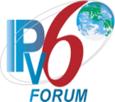
IF8: IPv6 Forum: M2M/IoT – What are the Futures in Communication?
Chair: Latif Ladid, President, IPv6 Forum & Senior Researcher, University of Luxembourg, Luxembourg
The public IPv4 address space managed by IANA has been completely depleted by 1 February 2011. Without public IP addresses, M2M and Internet of Things would be significantly handicapped. Most discussions about IoT have been based on the illusionary assumption that the IP address space is an unlimited resource, like oxygen produced for free by nature.
In early 90s, IPv6 was designed by the IETF IPng (Next Generation) Working Group and later promoted by the IPv6 Forum. Expanding the IPv4 protocol suite with larger address space and defining new capabilities restoring end-to-end connectivity and services, several IETF working groups have worked on many deployment scenarios with transition models to interact with IPv4 infrastructure and services. They have also enhanced a combination of features that were not tightly designed or scalable in IPv4 like IP mobility, ad hoc services, etc .,catering for the extreme scenario where IP becomes a commodity service enabling lowest cost networking deployment of large scale sensor networks, RFID, IP in the car, to any imaginable scenario where networking adds value to commodity.
This panel will discuss the open and scalable architecture model with some of the best experts to address the core issues: the IPv4 address crunch and its impact on IoT or the open standards needed for its scalability, IPv6 and its advanced IETF developments such as IPv6 adaptation layer over IEEE 802.15.4 (including header compression) known as 6LoWPAN or IPv6 Routing Protocol for Low power and Lossy Networks (RPL) as the way forward.
Speakers:
Latif Ladid, President IPv6 Forum, Senior Researcher, University of Luxembourg, Luxembourg
Introduction: M2M / INTERNET OF THINGS: Connecting Everyone and Everything?
Vinton Cerf, VP, Internet Evangelist, Google, USA
What are the Futures in Communication?
Geoff Mulligan, IPSO Chair, ISPO Alliance
The Role and Applications Scenarios of IPv6 in M2M & Internet of Things
John Jason Brzozowski, Chief Architect, IPv6, Comcast Cable, USA
Impact of IPv6 on the Consumer Electronics and the Creation of the CE Program for CEA
Sebastien Ziegler, Founder & President, Mandat International, Switzerland
The Internet of Things based on IPv6- EU FP7 Funded Project: IoT6
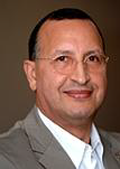 |
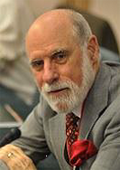 |
 |
 |
 |
|
Latif Ladid |
Vinton Cerf |
Geoff Mulligan |
John Jason Brzozowski |
Sebastien Ziegler |
Tuesday, 4 December 2012
13:45 – 15:30
IF9: Disruption Tolerant Networks (DTN) Forum
Chair: Vinton Cerf, VP, Internet Evangelist, Google, USA
The Internet protocols are built on a design paradigm of continuous and rapid end-to-end data interchange. They work very well within the Internet, but they work less well in environments characterized by large message exchange latencies – whether those latencies are due to signal propagation delay, transient connectivity loss, or both.
Delay-Tolerant Networking (DTN) was developed for communication over paths encompassing links that are subject to such latencies: a new network protocol utilizes the underlying transport protocols that work best in each environment and bridges between them at the boundaries between environments. DTN is particularly helpful for critical systems that must not lose data even when links are briefly disrupted, ranging from tactical military communications to space flight operations.
In this Forum, we will briefly present key concepts of DTN architecture; discuss NASA’s DTN Readiness Project, which began in 2009; review planned multinational DTN experiments in the International Space Station; review tactical military applications of DTN, both demonstrated to date and planned for the future; consider the challenges of managing networks and ensuring security in a delay-tolerant communication environment; outline the vision for a Solar System Internet based on DTN; and examine the features that enable DTN to be adapted to such a wide range of conditions.
Speakers:
Vinton Cerf, VP, Internet Evangelist, Google, USA
Introduction and Conclusion: DTN – the Big Picture
Scott Burleigh, Jet Propulsion Laboratory, California Institute of Technology, USA
Technical Overview and DTN in NASA
Kevin Gifford, Senior Associate Researcher, University of Colorado, USA
DTN on the International Space Station
Armando Caro, Senior Scientist, BBN, USA
DTN in the Department of Defense
Angela Dalton, Senior Professional Staff Member, Johns Hopkins University Applied Physics Laboratory, USA
Network Management and Security in DTN
 |
 |
 |
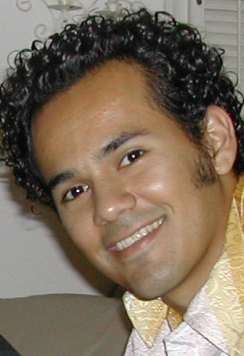 |
 |
|
Vinton Cerf |
Scott Burleigh |
Kevin Gifford |
Armando Caro |
Angela Dalton |
Tuesday, 4 December 2012
13:45 – 15:30

IF10: Smart Enterprise Forum: Next Generation Internet
Chair: Yacine Ghamri-Doudane, Chair, TCIIN, Associate Professor, ENSIIE & Université Paris- Est (LIGM), France
This panel will focus on the impact on the enterprise when deploying emerging large scale technologies such as Internet of Things, Smart Grid and Cloud Computing:
• Proper scalability
• Address depletion is not the only problem. There are critical infrastructure issues and beyond.
• “Secure transition” and “secure integration” of IPv6 are crucial to enterprise deployment. The only viable secure transition is the “secure Dual-stack” transition.
• Dual-stack transitions need globally routable IPv4 addresses. The internet community has recently reserved the last 5 IP blocks (84 M IP addresses) which is still not enough.
• The world IPv6 day has face the challenge that the business model parity is broken as the geo-location was broken due to lack of native (dual-stack) deployment.
• New management tools are designed to cater for IPv6 features not just mimicking IPv4 and NAT. IPv6 should be deployed with its built-in functionalities (multicast, mobility, end to end...).
• IPv6 Privacy Address is deployed only by Microsoft. 3GPP is contemplating the use of the IPv6 privacy address for the mobile devices but no vendor has yet deployed it.
• The cost of deploying IPv6 is a costly fork-lift upgrade for those that have not taken the early step of deployment. The cost of not doing anything is even higher.
• What is at stake is the “modernization of the networks” to cater and be securely ready for all new emerging Internet based solutions to form a Smarter world.
Speakers:
Yacine Ghamri-Doudane, Chair, TCIIN, Associate Professor, ENSIIE & Université Paris- Est (LIGM), France
Introduction: Deployment Impact on the Enterprise with Internet of Things, Smart Grid, Cloud Computing, etc.
Latif Ladid, President IPv6 Forum, Senior Researcher, University of Luxembourg, Luxembourg
IPv6: The NEXT BIG SHIFT for Enterprise and the Potential of IoT
Felix Davis, Product Line Manager, Connected Energy Group, Cisco, USA
Enterprise Smart GRID: The Way Forward
Ron Broersma, Member of US Federal IPv6 Task Force, Chief Engineer, Defense Research & Engineering Network DREN, USA
Evaluating the Current Status of US Federal IPv6 Deployments
 |
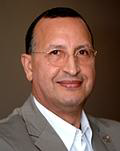 |
 |
 |
|
Yacine Ghamri-Doudane |
Latif Ladid |
Felix Davis |
Ron Broersma |
Tuesday, 4 December 2012
13:45 – 15:30

IF11: Green Communication & Computing Forum
Chairs: Jinsong Wu, Research Scientist, Bell Labs, Alcatel-Lucent, China
Chih-Lin I, Chief Scientist, China Mobile Research Institute, China
Recently, Green Communications and Computing have received many attentions from both industrial and academic researchers. The urgent needs and challenges of resource-sustainable and/or energy-efficient green communications and computing are the results of two simultaneously increasing trends of energy/resource costs and communications bandwidths impacting ecological and economic activities around the world. Substantial reduction of energy and resource consumption in the information & communications technology sectors is expected to be achieved through the innovative use of new architectures, protocols, and algorithms, which may fundamentally change concepts, structure, and designs of conventional communication systems. Research in green communications is inter-disciplinary in nature, since the motivation is to obtain energy and resource efficiency from various areas and levels of communication infrastructures and systems, and the complex communication systems that are a large-scale network composed of a number of interdependent and independent wired or wireless nodes.
The panelists, who are several leading experts on green communications and computing, will present and discuss a number of paradigm-shifting topics can be expected, including but not limited to sustainable and/or green (wireline/wireless/optical/ad-hoc sensor) network architecture/protocols/algorithms, sustainable and/or green hardware or chip designs, sustainable and/or green computing, green electricity transmission and distribution systems (e.g., smart power distribution infrastructure), energy-efficient wireless transmission techniques (e.g., reduced transmission power & reduced radiation), green computing/communications business/economy, green standardizations/regulations.
Speakers:
Jinsong Wu, Research Scientist, Bell Labs, Alcatel-Lucent, China
Green – Long Term Topics for Communications & Computing
Chih-Lin I, Chief Scientist, China Mobile Research Institute, China
How Far Are We from the Green Pasture?
Gerhard Fettweis, Mobile Communications Systems Chair, Technische Universität Dresden, Germany
From Milli-Scale to Mile-Scale Green Network Architecture
Keren Bergman, Columbia University, USA
Optically Interconnected Data Centers for Energy Efficient Networking
Kaustav Banerjee, Professor, UC Santa Barbara, USA, IEEE Fellow
Black Electronics will be Green
Daniel Kharitonov, Senior Product Manager, Juniper Networks, USA
Convergence in Green Standardization: Questions and Challenges
 |
 |
 |
 |
 |
 |
|
Jinsong Wu |
Chih-Lin I |
Gerhard Fettweis |
Keren Bergman |
Kaustav Banerjee |
Daniel Kharitonov |
Tuesday, 4 December 2012
16:00 – 18:00
IF12: Social Networks: Increasing Loneliness or Social Interaction?
Chair: Neeli Prasad, Director, CTIF-USA, Princeton, USA & Associate Professor, CTIF, Aalborg University, Denmark
Driven by rapidly changing requirements and business needs, ICT and applications are undergoing a paradigm shift: components are replaced by services, distributed over the network, and composed and reconfigured dynamically in a demand-driven way into service-oriented architectures.
It is quite impressive to see how asynchronous communication forms have reached wide success, yet by offering support only to traditional, text-based information exchange. These services are today at the basis of what has been defined as Social Networking, i.e. the possibility for individuals to interact, share, cooperate with others via the communications technology. The impact of such services can be measured not only in terms of the specific and direct service provided to their user constituency and their Quality of Life (QoL), but also in terms of their contribution to the emergence of new communication styles, network architecture, frameworks and language patterns.
The ability of the user to interact in a focused and personalized manner, as this is offered through the social networks, can transform the traditional one broadcast for all, to one broadcast, transformed to the needs of everyone.
New issues are raised related to actions of users/viewers and how this is influenced and influences viewing experience, how it affects the QoL and ways it can improve it, techniques for fusing user generated content in a non-intrusive and annoying or destructing way with the broadcasted content and also how can user generated content modify the transmission.
Speakers:
Neeli R. Prasad, Director, CTIF-USA, Princeton, USA & Associate Professor, CTIF, Aalborg University, Denmark
Introduction: Social Networks: Impact on Quality of Life (QoL)
Monique Jeanne Morrow, Distinguished Consulting Engineer, Cisco, USA
Everything Connected: Benefits and Challenges to Your Quality of Life
Charalampos Patrikakis, Professor TEI, Piraeus, Greece
Combining Multimedia with Social Networking: Think Big and Public, Thank Small and Personal
Mike Bailey, Project Lead & Corporate Entrepreneur, Qualcomm Labs, USA
Warren Cope, Senior Manager, Sprint, USA
Mobility and Social Networks Security: An Operator's View of Issues, Concerns and Opportunities
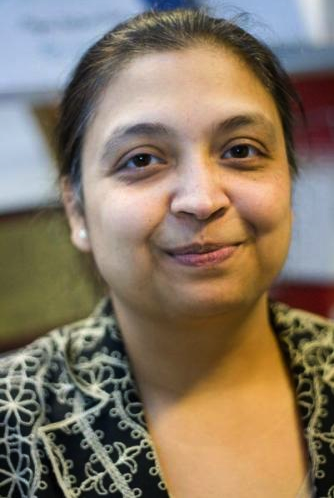 |
 |
 |
 |
 |
|
Neeli R. Prasad |
Monique Jeanne
Morrow |
Charalampos Patrikakis |
Mike Bailey |
Warren Cope |
Tuesday, 4 December 2012
16:00 – 18:00
IF13: Future Networks, IPv6 Deployment: World Views
Chairs: Nick Ng, Member of Hong Kong Institute of Engineers, USA
Suilun Lo, CTO, Hong Kong Broadband Networks, Hong Kong
Mohamed Hamdi, Associate Professor, School of Communication Engineering, Tunisia
The emerging demands on Internet for security, mobility, energy efficiency are hard to be met with IPv4 (32bits) where 4.3billion Unique Identifications/UIDs were exhausted on 31 January 2011 at Internet Assigned Number Authority/IANA level , and at its regional Asia Pacific Network Information Centre/APNIC on 15 April, 2011.
Although Private Address (RFC1918) and Network Address Translation/NAT can relieve the demand for UIDs in Internet, NAT induces significant processing delay at gateway nodes between domains and worsens the network latency. IPv6 (128bits) with about 340 trillion3 UIDs is expected to meet the challenge for communication more freely. End users also expect to have bigger bandwidth and the most low bit error rate Fiber‐to‐the‐home/FTTH for efficient communication and better data integrity to cater for high volume application transfer.
Thus, the deployment in Hong Kong of an ultra-high speed Internet access network will be presented as an integration marvel of technology and engineering effort, successfully carried out under the local regulatory framework. Deployment of IPv6 happened first in campus network environment of the Chinese University of HK, which is also the home of Hong Kong Internet Exchange/HKIX. HKIX is the second largest Internet Exchange in Asia Pacific region in terms of traffic volume. IPv6 deployment experience will be shared in Internet Exchange environment, plus HKIX’s participants with regard to IPv6 implementation.
The current research situation in Mainland China, including IPv6 and other technologies will be discussed. The future Internet technology, e.g., Identifier-based Universal Network will be presented for the Chinese perspective.
The European approach to Future Internet brings together R&D, experimentation and use cases towards large-scale deployment of technologies, services and applications. The various mechanisms in place, as well as a number of success stories will be presented, and put in the perspective of future developments. International cooperation aspects will be highlighted.
Speakers:
Nick Ng, Member of Hong Kong Institute of Engineers, & Suilun Lo, CTO, Hong Kong Broadband Networks, Hong Kong
Deployment of Ultra High Speed Internet Access Network
Shueng-Han Gary Chan, Director, Sino Software Research Institute (SSRI), Hong Kong
The Deployment of Cloud Architectures in Asia
Yan Ma,Professor, Beijing University of Posts and Telecommunications, China
IPv6 Research and Deployment Activities in China
HongKe Zhang, Director, & Hongbin Luo, Associate Director, Beijing Jiao Tung University, China
Future Internet Technology
Jorge Pereira, Principal Scientific Officer, European Commission, Portugal
The European Coordinated Approach to Future Internet, from Research to Deployment
 |
 |
 |
 |
 |
 |
 |
 |
|
Nick Ng |
Suilun Lo |
Mohamed Hamdi |
Shueng-Han
Gary Chan |
Yan Ma |
HongKe Zhang |
Hongbin Lou |
Jorge Pereira |
Tuesday, 4 December 2012
16:00 – 18:00
IF14: The Grand Debate: Internet vs. Telecommunications
Chair: Tom Coughlin, President, Coughlin Associates; Vice President, IEEE Consumer Electronics Society, USA
The Internet and traditional telecommunications are very different concepts so we can’t compare them directly. The question is what policies best serve the needs of society.
As with any new paradigm we tend to view the Internet in terms of services such as “voice” and “web” as if they were still services created by network operators. Today we use voice over IP instead of having to rely on a phone company and Netflix is just another application.
The Internet is a very different way to use the same wires and radios. Unlike analog signaling, we can preserve bits without knowing what they mean. We don’t even need all the bits! We deal with errors in the same way that we find the meaning in a sentence despite typos and assemble meaning from multiple sources.
With the Internet we distinguish the term “communications” used for the technology and the channels we use to exchange bits and the word “communications” in the sense of talking to each other apart from any particular path.
In this panel we will discuss the engineering and public policy implications of this fundamental shift from a dependency paradigm to one in which we create value outside of a network.
Speakers:
Bob Frankston, IEEE Fellow, USA
Vinton Cerf, VP, Internet Evangelist, Google, USA
Stagg Newman, Principal, Pisgah Comm Consulting, USA / Former FCC Chief Technologist, USA
David Farber, Professor, University of Pennsylvania, USA / Former FCC Chief Technologist, USA
 |
 |
 |
 |
 |
|
Tom Coughlin |
Bob Frankston |
Vinton Cerf |
Stagg Newman |
David Farber
|
Tuesday, 4 December 2012
19:00 – 20:30
IF15: Dialogue with Industry Leaders >>
return to Industry Forum home page







